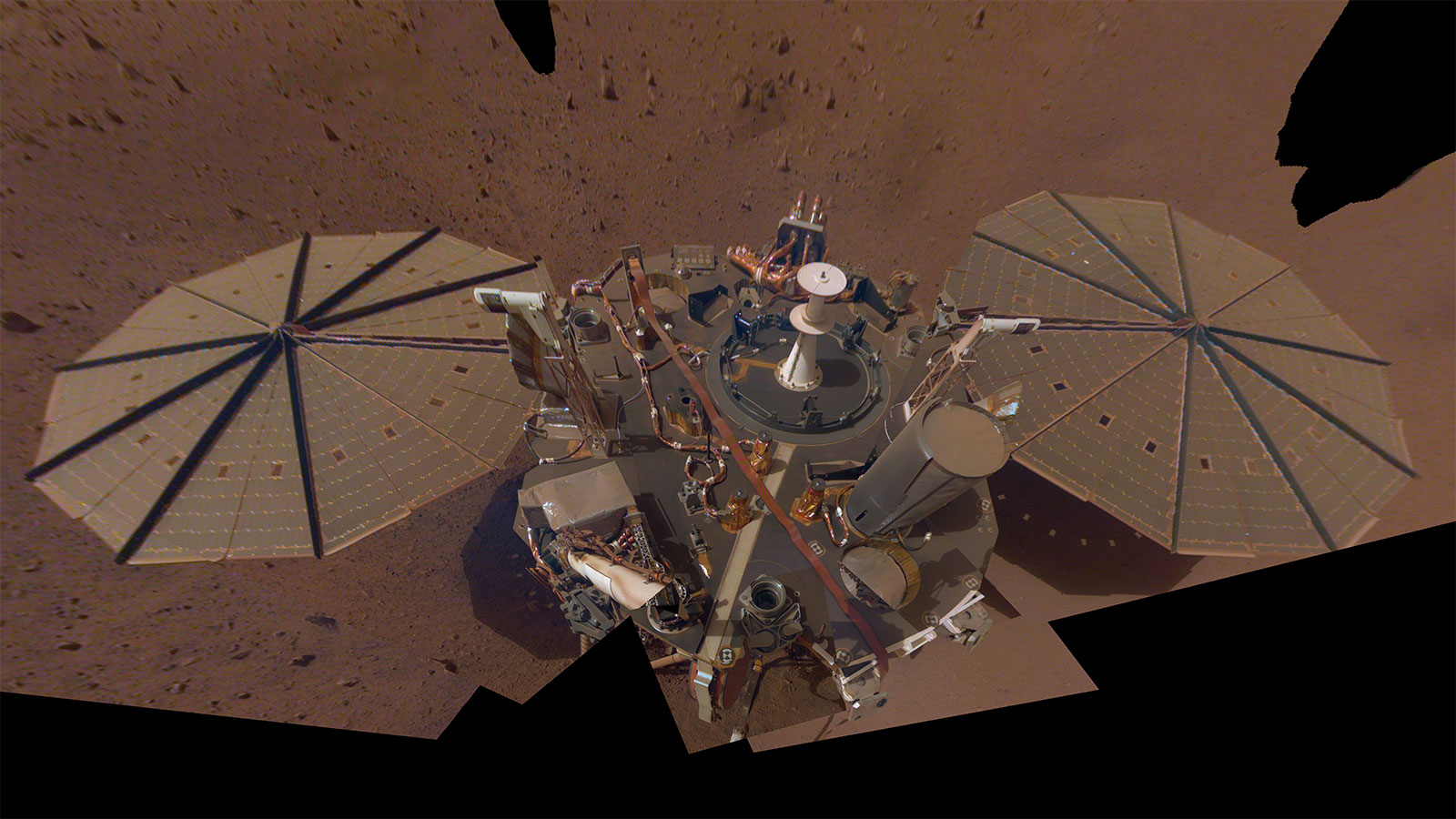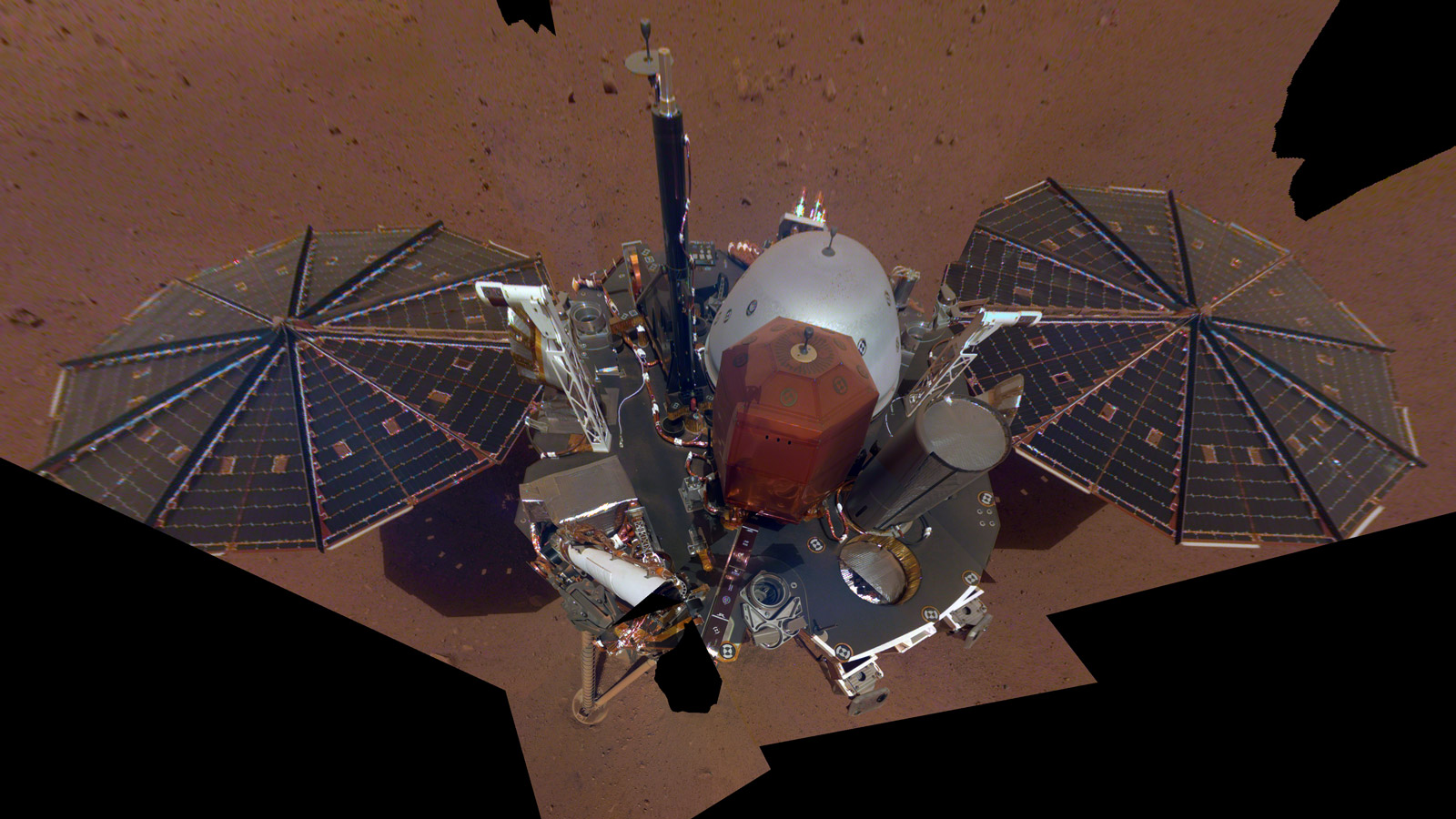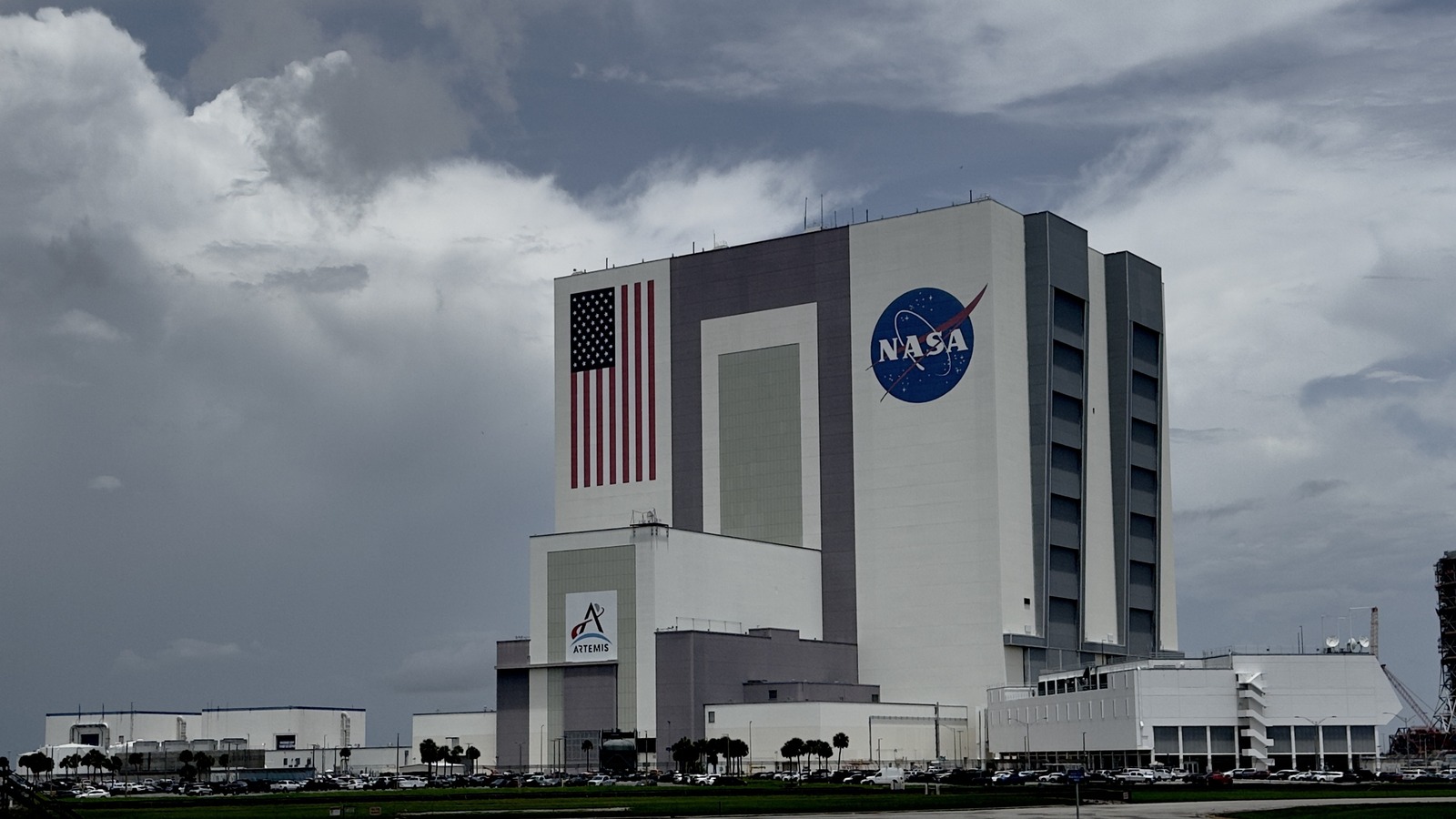
NASA's InSight Mars lander has taken its second selfie, and the photo shows just how much has changed for the spacecraft over the past few months.
InSight captured its first selfie on Dec. 6, just a week and a half after touching down on the Red Planet. In that photo, the lander looks shiny and new, and its two main science instruments — a seismometer suite and a burrowing heat probe called "the mole" — remain attached to the robot's deck.
The second selfie, which NASA released yesterday (May 6), shows a thin layer of dust covering the lander. And InSight's deck looks pretty bare, because the heat probe and seismometer are gone. The lander has placed both pieces of equipment on the ground using its robotic arm — the seismometer on Dec. 19 of last year and the mole on Feb. 12. (InSight also dropped a wind-dampening shield over the seismometer in early February.)
Related: Mars InSight in Photos: NASA's Mission to the Red Planet


"Now that they're removed, the viewer can see the spacecraft's air-pressure sensor (white object incenter), the tether box for its seismometer and the tether for its heat probe running across the deck," NASA officials wrote in a description of the new selfie, which is a mosaic of 14 photos captured between March 15 and April 11 by a camera on InSight's 5.75-foot-long (1.8 meters) arm. "Also visible is its robotic arm and grapple."
When a dust devil passed over InSight on Feb. 1, blowing small amounts of dust off of the lander's solar arrays, the air-pressure sensor recorded a drop of 9 pascals, or about 13% of ambient pressure. That's the biggest drop ever recorded by a Mars surface mission, NASA officials said.
The lander recorded wind speeds of 45 mph (72 km/h) at the time; however, the pressure drop suggests that the winds may have been even stronger, but too turbulent to measure, they added.
Breaking space news, the latest updates on rocket launches, skywatching events and more!
"The absolute fastest wind we've directly measured so far from InSight was 63 miles per hour (28 meters per second) [101 km/h], so the vortex that lifted dust off our solar panels was among the strongest winds we've seen," InSight participating scientist Aymeric Spiga, of the Dynamic Meteorology Laboratory at Sorbonne University in Paris, said in a statement.
"Without a passing vortex, the winds are more typically between about 4 to 20 miles per hour (2-10 meters per second) [6 to 32 km/h], depending on time of day," Spiga added.
The February dust-cleaning event made only a slight difference for InSight's energy budget, boosting one solar panel's output by 0.7% and the other's by 2.7%. But mission team members are still excited by the dust devil, because its passage gives them a chance to learn more about Martian weather and dust behavior.
"It gives us a starting point for understanding how the wind is driving changes on the surface," InSight science team member Ralph Lorenz, of Johns Hopkins University's Applied Physics Laboratory in Laurel, Maryland, said in the same statement. "We still don't really know how much wind it takes to lift dust on Mars."
InSight (short for Interior Exploration using Seismic Investigations, Geodesy and Heat Transport) aims to map the interior of Mars in unprecedented detail. The mission's data should help scientists better understand how all rocky planets form and evolve, NASA officials have said.
The seismometer recently detected its first apparent marsquake. But the going has been rockier for the mole, which stopped burrowing just 12 inches (30 centimeters) underground, far short of its target depth of 10 to 16.5 feet (3 to 5 m). InSight team members are still trying to determine what halted the mole's progress.
- Journey to the Center of the Red Planet: NASA's InSight Lander
- What is Mars Made Of?
- Occupy Mars: History of Robotic Red Planet Missions (Infographic)
Mike Wall's book about the search for alien life, "Out There" (Grand Central Publishing, 2018; illustrated by Karl Tate), is out now. Follow him on Twitter @michaeldwall. Follow us on Twitter @Spacedotcom or Facebook.
Join our Space Forums to keep talking space on the latest missions, night sky and more! And if you have a news tip, correction or comment, let us know at: community@space.com.

Michael Wall is a Senior Space Writer with Space.com and joined the team in 2010. He primarily covers exoplanets, spaceflight and military space, but has been known to dabble in the space art beat. His book about the search for alien life, "Out There," was published on Nov. 13, 2018. Before becoming a science writer, Michael worked as a herpetologist and wildlife biologist. He has a Ph.D. in evolutionary biology from the University of Sydney, Australia, a bachelor's degree from the University of Arizona, and a graduate certificate in science writing from the University of California, Santa Cruz. To find out what his latest project is, you can follow Michael on Twitter.
